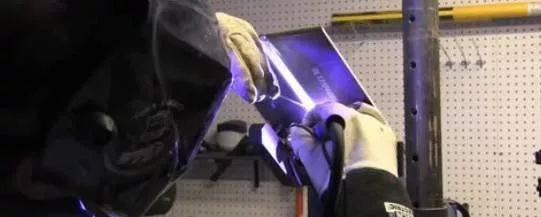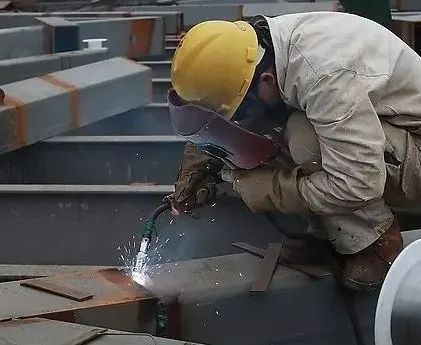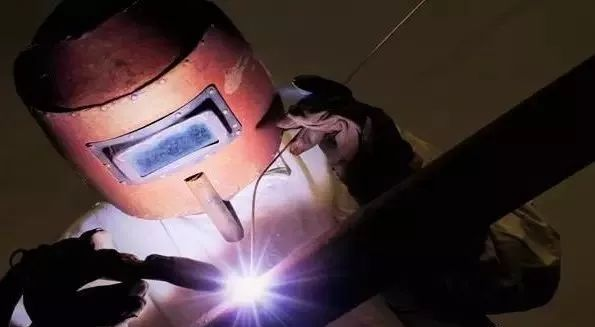The difference between TIG, MIG and MAG welding
1. TIG welding is generally a welding torch held in one hand and a welding wire held in the other, which is suitable for manual welding of small-scale operations and repairs.
2. For MIG and MAG, the welding wire is sent from the welding torch through the automatic wire feeding mechanism, which is suitable for automatic welding, and of course it can also be used by hand.
3. The difference between MIG and MAG is mainly in the protective gas. The equipment is similar, but the former is generally protected by argon, which is suitable for welding non-ferrous metals; the latter is generally mixed with carbon dioxide active gas in argon, and is suitable for welding high-strength steel and high-alloy steel.
4. TIG and MIG are inert gas shielded welding, commonly known as argon arc welding. The inert gas can be argon or helium, but argon is cheap, so it is commonly used, so inert gas arc welding is generally called argon arc welding.

Comparison of MIG welding and TIG welding
Comparison of MIG welding and TIG welding MIG welding (melting inert gas shielded welding) in English: metal inert-gas welding uses a melting electrode.
The arc welding method that uses the added gas as the arc medium and protects the metal droplets, welding pool and high-temperature metal in the welding zone is called gas metal shielded arc welding.
The inert gas (Ar or He) shielded arc welding method with solid wire is called molten inert gas shielded welding, or MIG welding for short.
MIG welding is the same as TIG welding except that a wire is used instead of the tungsten electrode in the torch. Thus, the welding wire is melted by the arc and fed into the welding zone. Electrically driven rollers feed the wire from the spool to the torch as required for welding, and the heat source is also a DC arc.
Xinfa welding equipment has the characteristics of high quality and low price. For details, please visit:Welding & Cutting Manufacturers – China Welding & Cutting Factory & Suppliers (xinfatools.com)
But the polarity is just the opposite of that used in TIG welding. The shielding gas used is also different, and 1% oxygen is added to the argon to improve the stability of the arc.
Like TIG welding, it can weld almost all metals, especially suitable for welding materials such as aluminum and aluminum alloys, copper and copper alloys, and stainless steel. There is almost no oxidation burning loss in the welding process, only a small amount of evaporation loss, and the metallurgical process is relatively simple.

TIG welding (Tungsten Inert Gas Welding), also known as non-melting inert gas tungsten shielded welding. Whether it is manual welding or automatic welding of 0.5-4.0mm thick stainless steel, TIG welding is the most commonly used welding method.
The method of adding filler wire by TIG welding is often used for backing welding of pressure vessels, because the air tightness of TIG welding is better and can reduce the porosity of the weld seam during welding of pressure vessels.

The heat source of TIG welding is a DC arc, the working voltage is 10-95 volts, but the current can reach 600 amps.
The correct way to connect the welding machine is to connect the workpiece to the positive pole of the power supply, and the tungsten pole in the welding torch as the negative pole.
The inert gas, typically argon, is fed through the torch to form a shield around the arc and over the weld pool.
To increase the heat input, typically 5% hydrogen is added to the argon. However, when welding ferritic stainless steel, hydrogen cannot be added in argon.
The gas consumption is about 3-8 liters per minute.
In the welding process, in addition to blowing inert gas from the welding torch, it is better to blow the gas used to protect the back of the weld from under the weld.
If desired, the weld puddle can be filled with wire of the same composition as the austenitic material being welded. Type 316 filler is typically used when welding ferritic stainless steels.
Due to the protection of argon gas, it can isolate the harmful effect of air on molten metal, so TIG welding is widely used in welding.
Easily oxidized non-ferrous metals such as aluminum, magnesium and their alloys, stainless steel, high-temperature alloys, titanium and titanium alloys, as well as refractory active metals (such as molybdenum, niobium, zirconium, etc.), while ordinary carbon steel, low alloy steel, etc. materials, TIG welding is generally not used except for occasions that require high welding quality.
Post time: Aug-24-2023



